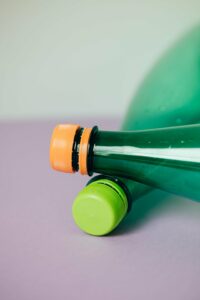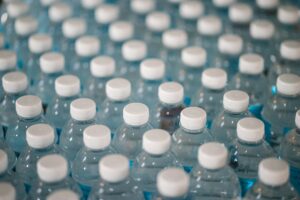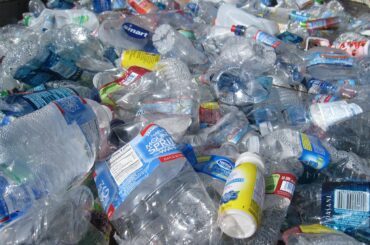Snapple is an internationally renowned brand of tea and juice drinks. They are popular not only for their natural ingredients and awesome taste but also for their environmentally-friendly practices.
Snapple has sold its drinks in glass bottles for more than 45 years. But recently, starting in 2017, Snapple made a shift toward using PET (polyethylene terephthalate) plastic bottles. So why did Snapple stop using glass bottles and shift to plastic bottles instead? How has this choice affected their stance on sustainability?
Contents
Why did Snapple stop using glass and switch to plastic bottles?
Snapple claims to be environmentally friendly, but they have used plastic bottles instead of glass ones. How do you think using more plastic is nature-friendly? Isn’t it just contributing more and more to the plastic pollution problem?

Sometimes being environmentally sustainable is very complicated. Most of us have been schooled to think that using plastic in any form is not nature-friendly. And yes, in many ways, this idea does make sense. But have you realized that this zero-waste and zero-plastic usage drive is also one of the main causes of global warming? Let me explain how.
Let’s take a hotel, for example. This hotel boasts a zero-waste and no-plastic usage policy. The main reason why the hotel markets sustainability is because it wants to attract eco-friendly nature lovers. So in accordance, they have wooden straws, bamboo chairs, teak beds and tables, wicker bins, glassware and even toothpaste tablets instead of tubes.
So there is really no plastic in sight. But in the end, the hotel’s demand for wood and paper has ended the lives of many trees. Many trees were cut down to make their beds, tables and cardboard packaging. Just think, if the hotel had used plastic instead, couldn’t it have saved all those trees?
This is one of the biggest ironies of the plastic-free drive. We do mean well, but by using less plastic, are we really doing the environment more harm than good?
As I mentioned earlier, the subject of sustainability is complicated. I feel that Snapple has made a wise decision in switching to plastic bottles. Recycling glass bottles requires much more energy than recycling plastic bottles. Recycling glass also emits more greenhouse gases than when we recycle plastic bottles. Glass is best for reusing and not for recycling.

However, in terms of human health, using glass bottles may be a healthier option for us. So another question arises. Are we compromising our health in our efforts to preserve the environment?
With regard to its decision to use plastic bottles instead of glass, Snapple says;
“with a bottle that’s made of 100% recycled plastic, uses less packaging material, and is filled with the same delicious Snapple flavors, we’re taking steps towards creating a more sustainable future.”
Snapple has already seen many benefits from its decision to use plastic bottles. They now require 80% fewer ingredients to manufacture and are easy to recycle. This has also reduced the need for 600 million new bottles each year.
The new plastic Snapple bottle is lighter in weight and slimmer in profile. Advantages from this include less shipping costs, thereby less energy consumed, and fewer greenhouse gases released.
Snapple’s decision to switch to plastic has also increased its demand for recyclable plastic bottles. They are now contributing towards a cleaner environment as people begin turning in their plastic bottles instead of trashing them.
Snapple has further improved their bottles by using washable ink to print their labels. They no longer use paper labels for their bottles. This has made the bottles easier to recycle. The bottle caps they use are now plastic, too, instead of their iconic metal caps.
As long as Snapple I concerned, shifting to plastic has been a good idea. Replacing plastic with glass and paper has saved energy and trees. But when we think of all the microplastics being washed down our systems, we are reminded again that sustainability is more complicated than we think. Snapple may be “made from the best stuff on Earth,” but does it now include microplastics too?
It’s important not to buy into products that are ‘green-washed.’ It’s important to make changes that are really positive. It’s important to get ourselves into a pollution trap that could endanger the planet.

And is Snapple only making these changes because they can cut down on their costs and make bigger profits? If this reduced cost of production is not being passed on to the people, then in reality, is Snapple’s decision more money-minded than they let on?
While Snapple’s change to plastic has not really been welcomed by consumers, it does not seem to have affected their sales in any way. And it definitely does not seem to have affected the taste and quality of their drink either. Personally, I don’t enjoy the feel of the plastic or the look of their new font and logo, but that does not keep me away from enjoying their iced Tea!
So, in conclusion: Why did Snapple stop using glass bottles?
Snapple has stopped using glass bottles because they are more sustainable. Plastic PET bottles are easier to recycle and require less energy to ship than bulky glass ones. While the change may really have been intended to be eco-friendly, it might also be a green-washed motive towards cutting down costs and widening their profit margins. Sustainability is a complicated subject!
Also read: Why is the world moving towards sustainability?
*All pics are courtesy of Unsplash.com





